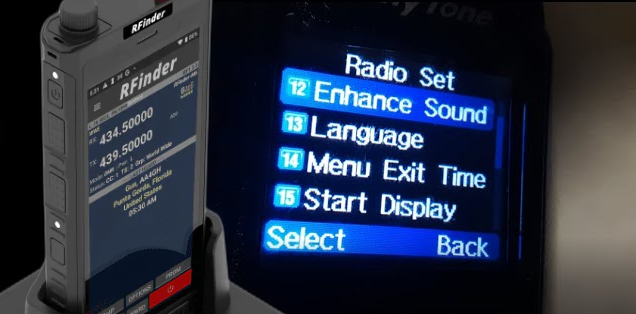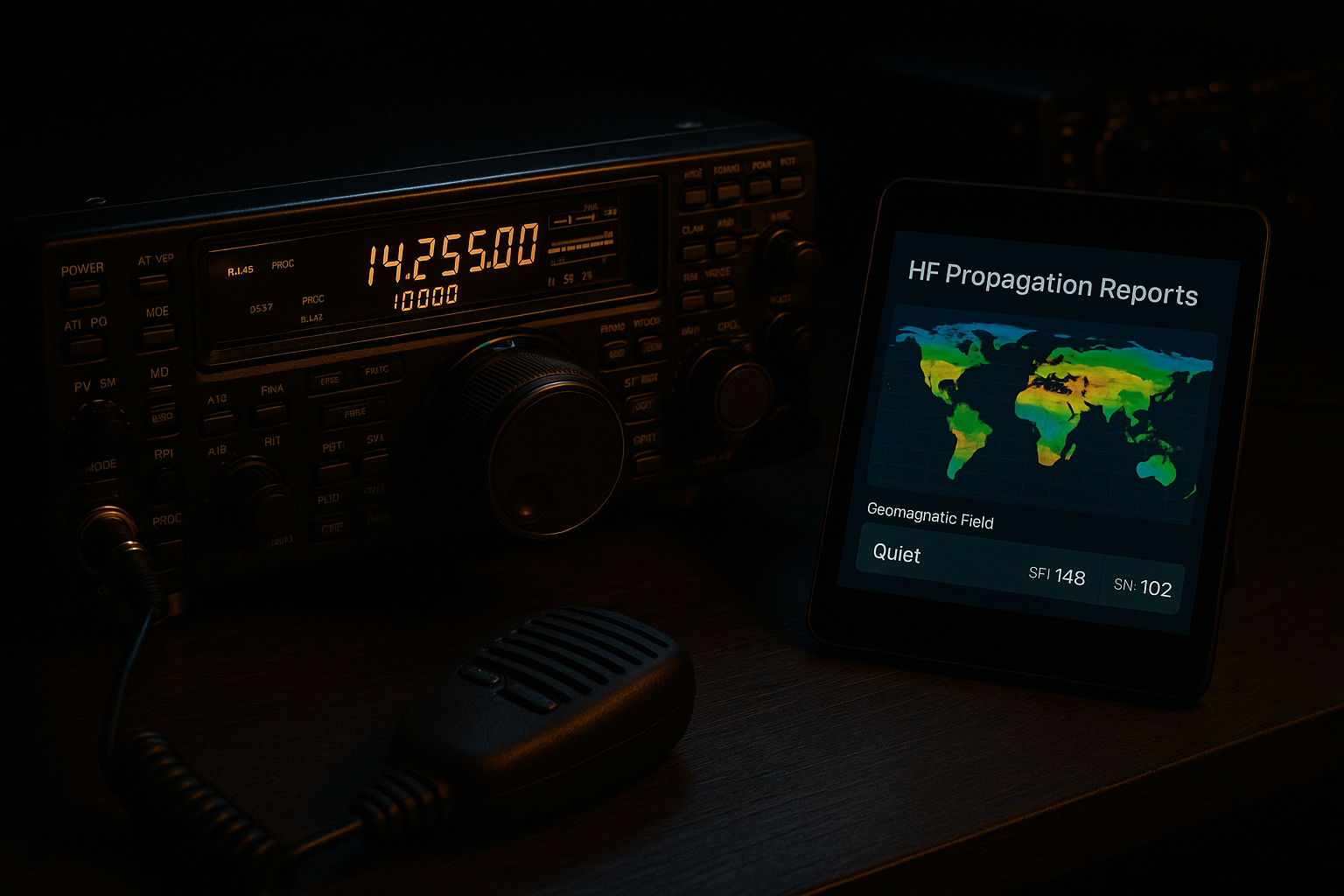
In the world of amateur radio, Digital Mobile Radios (DMR) offer advanced features and the flexibility to connect across networks and regions. Two popular contenders in this space are the RFinder M6 and the AnyTone AT-D878UVII Plus. While both radios serve the same core purpose—enabling reliable digital communications—they are radically different in terms of design, features, and user experience. This article will dive into a detailed comparison between these two models to help you choose the right DMR radio for your needs.
Overview of the RFinder M6
The RFinder M6 is an innovative blend of a DMR radio and a smartphone, running on the Android operating system. It offers dual-band DMR and FM analog functionality, combined with 4G LTE, GPS, and Wi-Fi capabilities. The unique appeal of this device is its ability to replace multiple devices (phone, radio, GPS, etc.) in a single unit, making it highly versatile.
- Key Features of the RFinder M6:
- Operating System: Android, essentially turning this into a smartphone with DMR capabilities.
- Connectivity: 4G LTE, Wi-Fi, Bluetooth, and GPS integration.
- Display: 5.5-inch multi-touch screen for a full smartphone experience.
- Power: A powerful 6500 mAh battery for extended usage.
- RFinder’s Integrated Network: Access to the worldwide RFinder repeater directory.
- Camera: Dual cameras for video and photos.
For more details, you can visit the RFinder M6 product page.
Overview of the AnyTone AT-D878UVII Plus
The AnyTone AT-D878UVII Plus is a traditional dual-band DMR/Analog handheld transceiver, known for its powerful performance and exceptional feature set. It’s one of the most widely used and trusted radios among amateur radio enthusiasts due to its simplicity, affordability, and reliability.
- Key Features of the AnyTone AT-D878UVII Plus:
- Dual-band Operation: 144-148 MHz (VHF) and 420-450 MHz (UHF).
- DMR and Analog Compatibility: Switch seamlessly between digital and analog modes.
- Power Output: Up to 7 watts, ensuring strong signal transmission.
- Bluetooth Connectivity: Allows for wireless operation with accessories.
- GPS: Built-in GPS for location tracking and APRS functionality.
- Battery: Comes with a 3100 mAh battery for long-lasting operation.
- High-Capacity Memory: Holds up to 500,000 digital contacts.
To explore more about this radio, check out the AnyTone AT-D878UVII Plus product page.
Design and Build Quality
- RFinder M6: With its 5.5-inch touchscreen, the RFinder M6 looks and feels like a rugged smartphone. The solid build makes it suitable for both outdoor and indoor operations, and it’s IP67-rated for water and dust resistance. Its weight and size, however, make it bulkier than most conventional DMR radios.
- AnyTone AT-D878UVII Plus: On the other hand, the AnyTone AT-D878UVII Plus has a more compact and traditional radio design. Its form factor is smaller and lighter, which may appeal more to those looking for a straightforward handheld DMR radio. It’s durable and well-built, but it doesn’t carry the same smartphone-like appeal as the RFinder M6.
Winner: The RFinder M6 excels in design if you prefer an all-in-one device, while the AnyTone AT-D878UVII Plus wins for portability and traditional radio use.
User Interface and Usability
- RFinder M6: Thanks to its Android OS, the RFinder M6 is essentially a smartphone, so users familiar with Android will find it very intuitive. The large touchscreen and full access to apps from the Google Play Store allow for a highly customizable experience. This makes it ideal for tech-savvy users who want a device that can do more than just DMR.
- AnyTone AT-D878UVII Plus: This radio sticks to a more conventional two-way radio interface, with a small screen and keypad. Programming can be done via the keypad, but many users prefer to configure it through PC software. Though it offers powerful features, the learning curve can be steep for beginners.
Winner: The RFinder M6 is superior in terms of ease of use for those familiar with smartphones, but the AnyTone AT-D878UVII Plus offers a more traditional radio interface that might appeal to purists.
Battery Life
- RFinder M6: The M6 is equipped with a 6500 mAh battery, significantly larger than most DMR radios. Given its smartphone functionalities, such as GPS, 4G, and apps, this larger battery is necessary to ensure prolonged usage.
- AnyTone AT-D878UVII Plus: The AT-D878UVII Plus comes with a 3100 mAh battery. While smaller than the RFinder M6’s, it is sufficient for most users as it focuses primarily on radio communication. It can last an entire day on a single charge, depending on usage.
Winner: The RFinder M6 offers more battery life, but this is offset by its wider range of functions. For basic DMR usage, the AnyTone AT-D878UVII Plus is more than adequate.
Performance and Functionality
- RFinder M6: The RFinder M6’s Android OS and 4G LTE support enable functionality far beyond that of a traditional radio. It can serve as your smartphone, GPS, and internet device, in addition to providing DMR and analog radio communication. The RFinder M6 also grants access to RFinder’s repeater directory, making it easier to connect to repeaters worldwide.
- AnyTone AT-D878UVII Plus: The AnyTone AT-D878UVII Plus, while more limited to radio functions, is a powerhouse for DMR enthusiasts. It supports dual-band operation, high memory capacity, and Bluetooth. For its price range, it is one of the most feature-rich radios available for amateur operators.
Winner: The RFinder M6 is more versatile with its smartphone features, but the AnyTone AT-D878UVII Plus focuses on radio performance and stands out for its robust DMR capabilities.
Price Comparison
- RFinder M6: With its cutting-edge combination of DMR and smartphone capabilities, the RFinder M6 comes at a premium price, typically retailing around $1000.
- AnyTone AT-D878UVII Plus: The AnyTone AT-D878UVII Plus is far more affordable, priced around $300. It delivers excellent value for those looking for a dedicated DMR radio without extra smartphone features.
Winner: If budget is a concern, the AnyTone AT-D878UVII Plus is the clear choice, offering excellent features at a fraction of the cost. For users looking for the convenience of combining multiple devices into one, the RFinder M6 justifies its higher price.
Conclusion
Choosing between the RFinder M6 and the AnyTone AT-D878UVII Plus depends largely on your needs as a user.
- RFinder M6: Ideal for users who want a hybrid device combining the functionalities of a smartphone and a DMR radio. It offers unmatched versatility and convenience but comes at a higher price and with a larger form factor.
- AnyTone AT-D878UVII Plus: Best for those seeking a reliable, high-performance DMR radio without the additional smartphone-like features. It’s more affordable and compact, making it suitable for both beginners and experienced amateur radio enthusiasts.
Explore the RFinder M6 and the AnyTone AT-D878UVII Plus to make an informed decision based on your communication needs!
